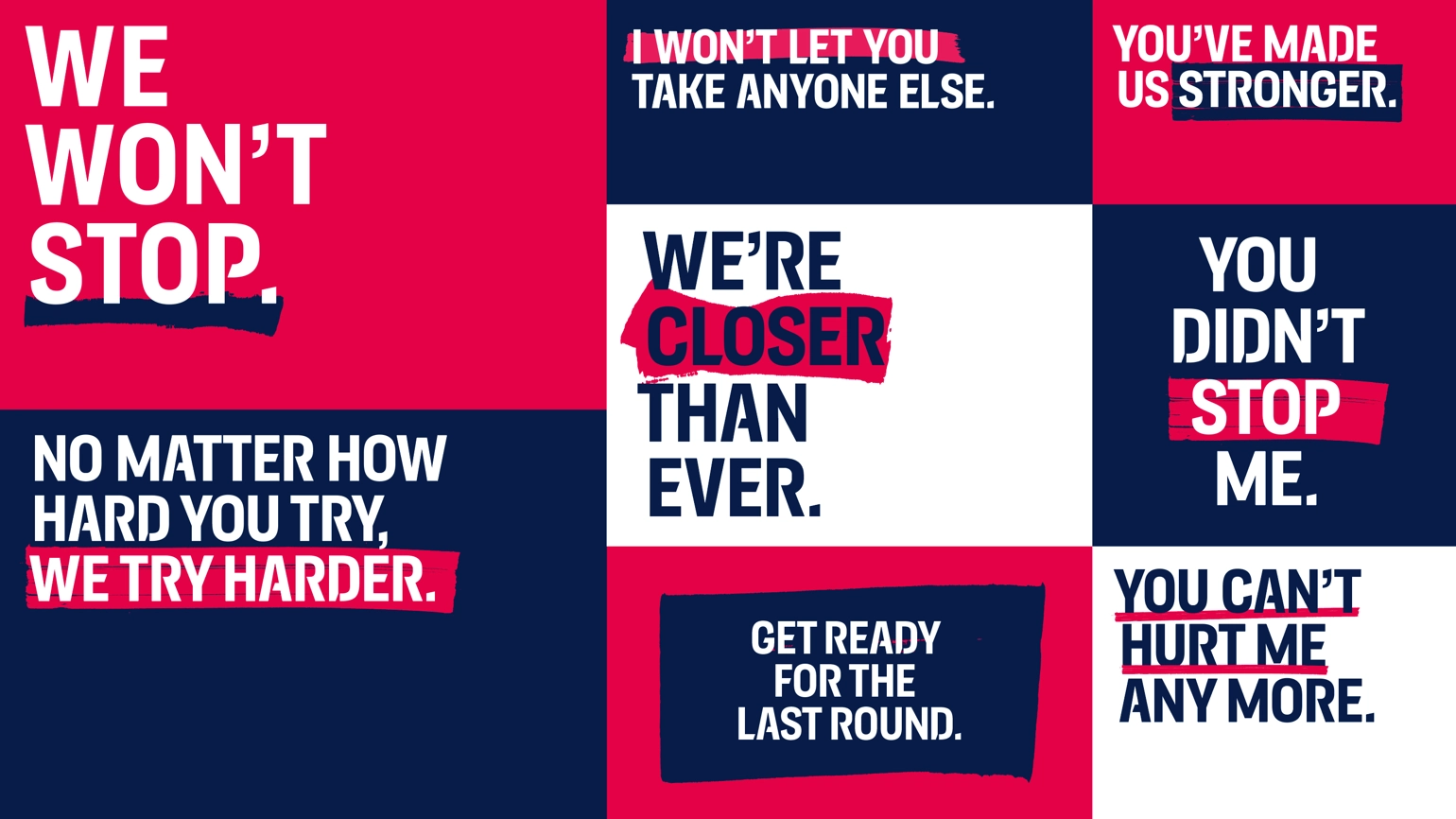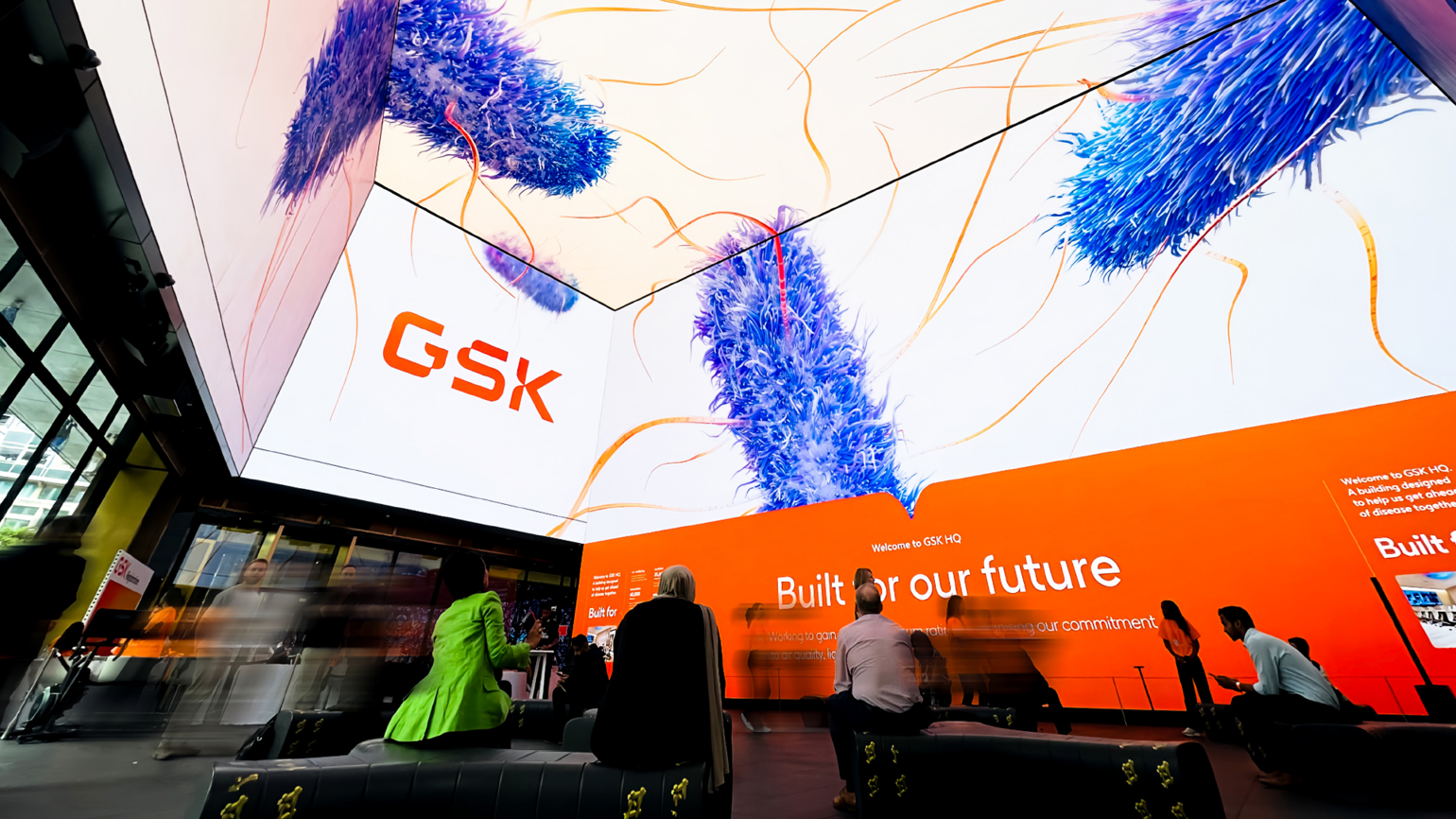Return to journal
The brand that lost its nerve
Why even the best-built brands can falter - and how to keep yours working in the real world

Every great brand starts out with conviction. A big idea. A galvanising strategy. A promise to do things differently.
But somewhere between the briefing decks, guideline packs and the real world, many of them appear to lose their nerve. The big idea wobbles under the weight of opinions, the design system gets bent out of shape, the story fragments, and what began as a confident expression of who an organisation is – and where it’s going – dissolves into compromise or chaos.
When this happens, it’s not just consistency that’s lost: it’s belief. Somewhere along the way, stakeholders get divorced from the work’s original intent. Externally, customers feel the uncertainty as messages shift and identity blurs with other brands. Internally, employees stop recognising the new force they were asked to rally behind. Momentum stalls and a once-powerful idea becomes an echo of itself: familiar somehow, but hollow.
In a noisy, fast-moving world, this isn’t a small risk: it’s an existential one. It’s a missed opportunity to translate an authentic understanding of what an organisation is, and needs to be, into something meaningful.
Why good brands go bad
Even the strongest brands - built on the right strategic foundations and creative guile - can come unstuck in practice. And this ‘unsticking’ can happen in mere weeks after launch or even after years of deep success. In our experience, this can happen for a host of reasons.
The ‘launch and leave’ trap
Time and again – and often for very understandable reasons - roll-out is either treated as an afterthought or confined to certain corners of an organisation. Guidelines land, the launch film hits the intranet, the team gives itself a pat on the back…and everyone moves on.
But a brand isn’t built on a reveal. It’s built on repetition, across every channel and touchpoint, creating a tapestry of experiences that ladder up to a consistent, constructive perception of a business among its multiple audiences.
The local stretch
Almost all brands need to confront the clash between global ambition and ‘local’ reality. A brand crafted in one context rarely survives contact with another without some level of adaptation – but flexibility without clear parameters breeds chaos.
It’s a fine line to tread – but teams need both permission and agency to flex alongside a clear, shared sense of what changes are non-negotiable.
Death by committee
Getting buy-in to brand thinking from the full range of internal stakeholders is crucial and can be the difference between a brand flying or going missing in action. But few things blunt a brand faster than groupthink.
Good brand work is always built on a combination of evidence and inspiration, but often only its surface layer is seen – and its very nature means it will always inspire an emotional reaction. Without careful management, feedback loops that invite everyone’s view (from the CEO’s partner to the guardian of the HR team) risk putting a brand at the whim of arbitrary opinions and passing priorities. The result is often distinctiveness stripped away in the name of consensus.
Not built for change
Markets shift, channels multiply, causes rise and fall. It has ever been thus, but the pace of change we’re experiencing right now will never be this slow again.
Brands that aren’t designed for evolution from the ground up – and particularly those that aren’t designed for our digital age - crumble under the pressure to stay relevant. Consistency doesn’t mean rigidity: it means having a system flexible enough to absorb new trends without losing itself in them.
Discipline deficit
While some consider discipline to be the enemy of creativity (a debate for another day), it’s certainly required to protect it.
But in many organisations, there’s little central oversight of how the brand shows up in the wild beyond the basics. Assets get tweaked to fit personal taste. Messages evolve to serve short-term goals, issues or crises. Undesired inconsistencies creep in and, if they go unnoticed, can begin to quietly proliferate, reshaping what audiences think the brand stands for.
The brand straightjacket
At the other end of the spectrum sits the brand so rigid, it barely breathes. We’ve all heard it: the knowing eye-roll followed by the dreaded ‘that’s great, we’ll have to check with the brand police.’ And suddenly, even the most modest creative idea becomes a risk assessment.
A healthy brand system needs boundaries, of course. But when guidelines are written too tightly - when every colour, word and layout is prescribed, or when the range of options are stiflingly narrow - the brand stops being a springboard and starts being a straitjacket that causes nothing but disengaged compliance.
Extra Shots: Mike and Damo unpack what makes a brand truly work, why most miss the mark, the secret to building one that stands out, and how (and how not) to use AI along the way.
How to help your brand hold its nerve
Earlier this year, we explored some of the issues we’re seeing with brand building today. The goal, we argued, is a brand that’s built to work: one that drives strategy, culture and performance. So how can brands hold their nerve in an unpredictable world? Here’s four starter-for-ten principles that demand qualities of vigilance, confidence and belief.
1. Build cultural oxygen
A brand’s success lives and dies by how well it is activated by a broad range of internal communities – not just the usual suspects. That means going beyond the usual launch activity and delivering bespoke training for key teams. Brands that work rely on ‘cultural oxygen’ cultivated through rich storytelling and an ongoing campaign-like approach that generates real relevance and buy-in in all corners.
2. Build systems for feedback, not free-for-all opinion
Strong brands are engineered by teams that listen widely but filter wisely to make sure every comment doesn’t demand course correction. Create structured, ongoing channels for input from key internal stakeholders (as well as measuring reaction from broader audiences, of course), but route that feedback through guardrails grounded in established, socialised and understood ‘truths’ that shaped your development of the brand in the first place.
3. Create brand stewards (not brand police)
In an age where attention is hard-won and both adaptability and cultural nuance matter, the best brands aren’t policed, they’re stewarded, by people trusted to bring them to life, interpret, experiment and play.
Embrace careful devolution. Bring select individuals across functions and markets into an ongoing process and empower them to interpret the brand in their context, share what works and challenge what doesn’t. Bring that insight back to the centre – where there can be the appropriate vigilance - to empower a constant but controlled re-assessment of how well your brand system is working, and landing.
4. Design for evolution
Brands that work aren’t static identities: they’re dynamic systems built to flex with the world around them. That means designing language, messaging and design assets ready for all channels and engineered to anticipate change. Your central brand idea should be strong enough to hold steady while its execution evolves across channels, technologies and cultures. Done right, it’s less about managing updates and more about orchestrating momentum.
To chat more about how we could help your brand truly ‘work’, drop us a line here.




